ALL RIGHT, BOYS AND GIRLS, STOP GRUMBLING; IT’S TIME TO LIGHTEN UP THE MOOD HERE.
Question: You’re in a room with a serial killer, a monster wielding an axe, and a Legacy book publisher. You have a gun but it has only two bullets. What do you do?
Answer: Shoot the publisher twice.
All right. Back to work. (But remember that in case some such fate should ever befall you.)
At this point, some of you will have quit. “Too much discipline, too much work, too many rules, too much of this, too much of that.” Good riddance; we’re glad you’re gone; you wouldn’t have made it anyway.
Some of the rest of you will have done the work and now you’ve got a one-page outline of a story that you understand. But once again, the road divides. Some of you will start writing your book now and more power and best wishes to you. Vaya con dios. It might just work and I wouldn’t try to talk you out of it, although it’s going to be a tough slog.
But some of you will hang on with me for one more dose of foul-tasting pre-writing medicine….and since I owe you my best advice, here it is.
Take what you’ve got and now do a full plot of your book — you’ve only got a story so far — do a full plot and then do a chapter-by-chapter outline.
Stop yelling at me. You think I’m talking through my hat? Let me roll up the big guns.
Oh, wait. Sure, you’ve read about a lot of books that are written without a full outline. Believe what you want but people who say they don’t plot before writing are lying to you and probably to themselves. And if they’re writing a genre book, the chances of their doing it without outlining first are basically nil.
Take the great Mickey Spillane, who created the iconic tough guy Mike Hammer. Mickey used to say that he didn’t plot, but Mickey for a long time had worked as a writer of comic books and he knew from experience what went into the beginning, middle and end of a story. He didn’t have to write it down on paper to decide how it would work out.
He also sometimes said he wrote the last scene of the book first. Well, how do you know what will be the end of a book if you don’t know what precedes it? Now Mickey Spillane was, as I’ve indicated, a special case, a writer who knew his stories from the marrow of his bones, but most of us aren’t that way. So what we have to do is to find a process that we can make repeatable for each of us, even as we’re building the experience so that someday we might be able to write the story in our heads. I’ve got to warn you, though; after almost 200 books or so, I still can’t write one without a good written outline and it’s probably a good bet that you won’t be able to either.
I simply know this as a fact. Every time I’ve tried to write a book without an outline, it’s not as good as it should have been and it takes me twice as long to write as it should have.
And maybe here’s a good place to define some terms and relate them to what we’ve been talking about:
Idea: Just what it sounds like. Sort of “I want to build a house.” (Think: one sentence.)
Story: The house must be big enough for me, my twelve stupid kids, my grotesque wife and and my hideous meddling mother-in-law. It should be in Virginia Beach because I know places there to hide. (Think: one paragraph.)
Plot: This is the architect’s sketch of this monstrosity of a house, a drawing of what it will look like. (Think: one page.)
Outline: These are the contractor’s blueprints which show the room where those awful kids can be locked up; a wine cellar in which to stuff the mother-in-law’s body; and an armor-plated room for me, the owner, in which to hide. Also shown is a kitchen in which to cook up gruel, and sketches of the faucets and the windows and the heating system. (Think: a full chapter-by-chapter outline.)
There you go. Idea, story, plot, outline. The words may sound kind of interchangeable, but in truth, there’s a shade of difference among all of them. And I hope you get the idea.
Now…about the virtue of plotting and outlining, don’t just take my word for it. Anyway, by now you’re probably saying to yourself, What does he know anyway?
Fair enough again…but here are some statements from and about the massive best-selling author John Grisham in a USA Today interview.
Grisham outlines his books extensively and sometimes these outlines take longer to write than the manuscript itself . (And he occasionally is working on several outlines at the same time.) I have read that Grisham can frequently take six months or more to get a proper fully-plotted outline for his book and then will write the entire novel in just a couple of months.
He says, “The more time I spend on the outline, the easier it is to write the book.” (Read that again, boys and girls, this time aloud.)
Most of the work outlines he produces consist of a 2-paragraph synopsis of each chapter in the book. Grisham regards doing these outlines as almost painful, but he knows they are necessary for him to produce the usual Grisham best-seller.
He said once that he learned this outlining practice after writing “A Time to Kill.” The manuscript was over 900 pages long and in an interview, Grisham said “It was a mess.” Three hundred pages were eventually lopped out of the tale and Grisham called that one of his greatest writing lessons and that he would never ever do that again, namely waste 300 pages. So when he wrote “The Firm,” he decided to outline, to streamline and he called that his biggest learning experience.
He is of course a wonderful plotter. But he wasn’t always because until he learned the virtue of outlining fully, he wasn’t always in control of his material. Some of his early stuff was “close but no cigar” but now he can see what to add, what to leave in, what to cut out. Without a full plot outline, he was only guessing.
+ + +
All right, I hear some of you already, whining and complaining. “Oh, but having a plot is so mechanical….it’s so confining….it’s so restrictive. If I write a plot, I will have no freedom.”
What crap. And exactly 180 degrees wrong.
A plot is not stultifying; it is freeing. It’s like a roadmap. Suppose you were driving from New York City to Florida; your roadmap would tell you to get on Route 95 South and it’ll take you there.
I submit that road map is wonderfully freeing because somewhere during the trip, you might see a sign for Madame Fifi’s Pleasure Palace, and you can turn there, commune with Madame Fifi for ten minutes or overnight if you remembered your credit card, and then, without hassle, you just return to Route 95 South and continue on your voyage to Florida. Has that roadmap restricted your freedom? Hasn’t it actually given you more freedom?
A map shouldn’t let you get lost and neither will an outline.
More snivelling. “But suppose I come up with a better idea but I can’t use it because it’s not in my outline?”
Who says? Nothing stops you from leaving Route 95 and taking a parallel road for awhile and once you’ve tasted all the charms of that road, you can get back on the main highway.
(I hate doing all these analogies, but dammit, they’re necessary…and I can’t think of anything better right now.)
Let’s listen to Mary Higgins Clark about how she writes one of her always best-selling novels. Before beginning the actual writing of her books, Mary develops an outline and frequently very detailed biographies of the main characters, stuff that’ll never make it into the book but which Mary feels comfortable knowing
Each chapter is continuously revised in the outline as she writes, and when she is finally ready to move onto the next chapter, she considers this last chapter done and sends it to her editor.
Different in some measure from Grisham’s practices, but the core belief is the same: write a fully-plotted outline before you start writing the book.
Here, for your edification so you can see how it’s done, is a link to the chapter by chapter plot line of Raymond Chandler’s “The Big Sleep.”
http://www.scholieren.com/boekverslagen/33328
Basically, I’m not a big fan of this novel. Well, why pussyfoot around? Actually I think the book is stupid; however, Raymond Chandler is a particular favorite of artsy-fartsy mystery readers and critics and this rather bizarre genre mystery featuring the private eye Philip Marlowe is often ranked as one of the 100 best novels of all time.
Pfffft. Personally, I always thought Chandler was too cute by half and, like the author Trevanian for instance, too hell-bent upon showing you just how smart he was by using obscure little literary references, and this particular novel has a more complex plot than the King James version of the Bible.
Still you pays your money and you takes your choice. Because I don’t much care for something doesn’t really mean there’s anything wrong with it. (I am often just cranky.) And it is instructive to follow that link above to Chandler’s novel and to see how that book’s outline was built. A complicated story to be sure — but it starts, middles and ends. You should be so lucky.
AND THAT’S IT FOR ME FOR A WHILE.
I’m going to stop yelling at you until the next blog, Number Five, I think. So if you want to start writing, go ahead. I don’t think you should yet. Instead I think you should do a chapter by chapter outline….and then start writing. But if you’re leaning in the opposite direction, probably nothing I say is going to change your mind so go for it. Just don’t say later, if you’re disappointed, that it was my fault.
Whatever you decide to do, here’s the bottom line: you’ve got a story. Either now or soon, write it. Get words down.
And better times are coming. Up till now, I’ve been trying to show you how to think. Next time, I’ll start talking about how to write and maybe show you some other stuff you need to know to change your manuscript from a sow’s ear into a silk purse.
Or, from my lips to God’s ears, into a novel that somebody will pay to read. Comb your hair.




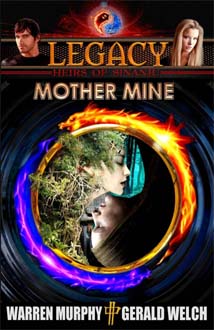
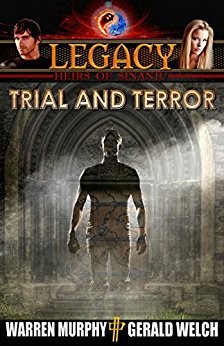
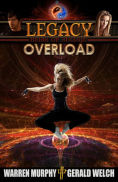

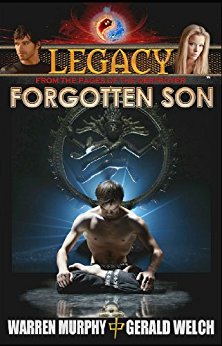
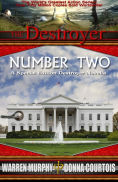
Reading these lessons reassures me better than any review I could get. It’s great to know that all the things I decided were missing from previous years’ attempts to sell novels are the same things Warren Murphy says I need. Whew. I chose right. So far. Crossing my fingers lesson 5 doesn’t have me smacking myself in the head and proclaiming (in my best Homer Simpson voice) “Doh!”
Thanks again, Warren. I’m going to save all four of these lessons for constant future reference … for when I get enough time in my crazy life to pen my great American novel. You are so CORRECT when you emphasize the importance of creating a game plan for the entire narrative BEFORE YOU WRITE the book. This is a akin to being an architect and getting the perfect blueprint before you become a builder and start with the concrete, wood-framing and brick-laying, etc. The fact that any man can write TWO HUNDRED in one lifetime books blows my mind. There was a rabbi who once said that all you need to do in life is: 1) have a child, 2) write a book and 3) plant a tree. I think writing 200 books gets you outta the tree planting, haha

God bless you, sir, for sharing your knowledge and mentoring us all!
Happy Holidays to you and your “far-flung” family
Ike